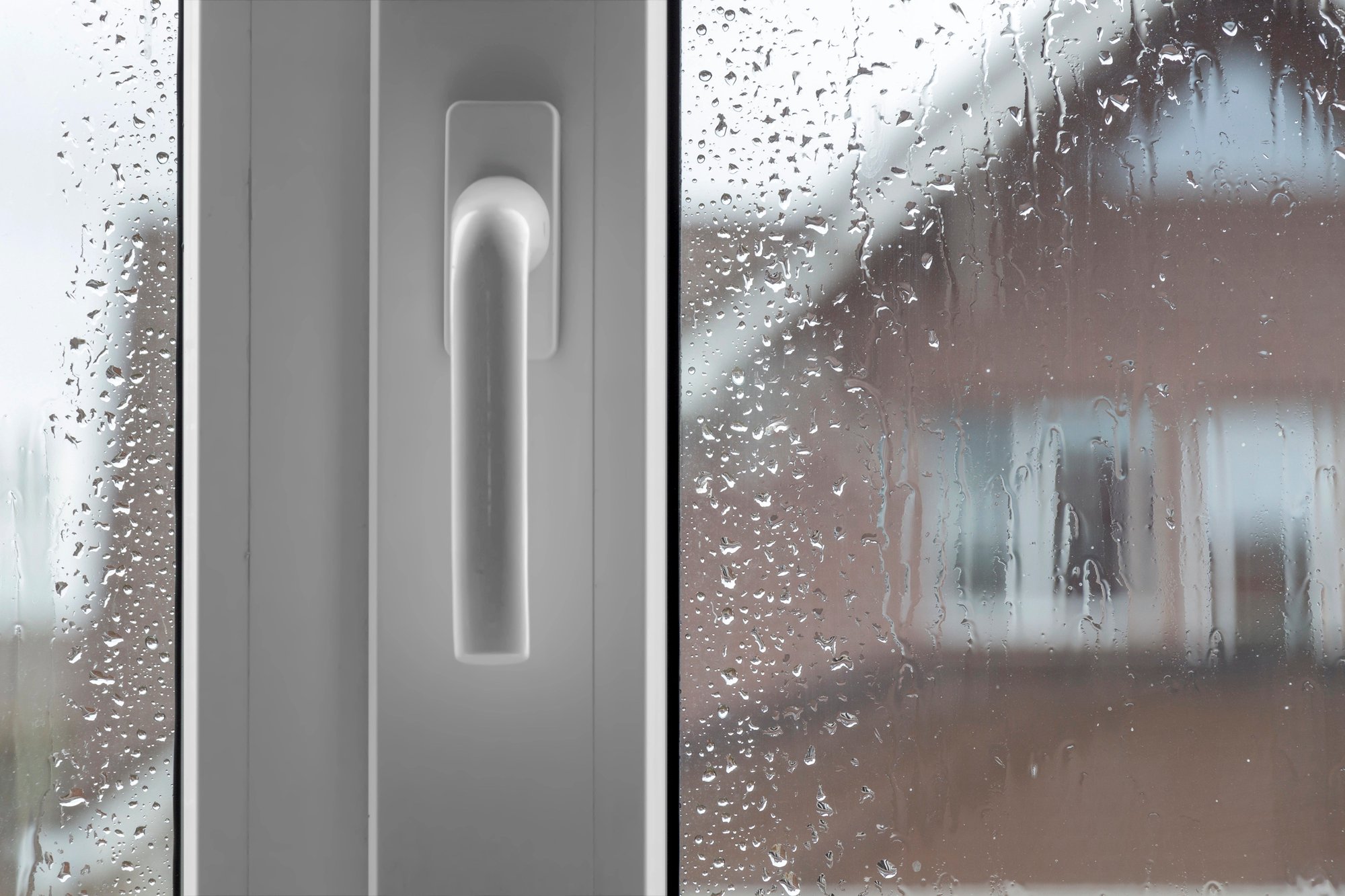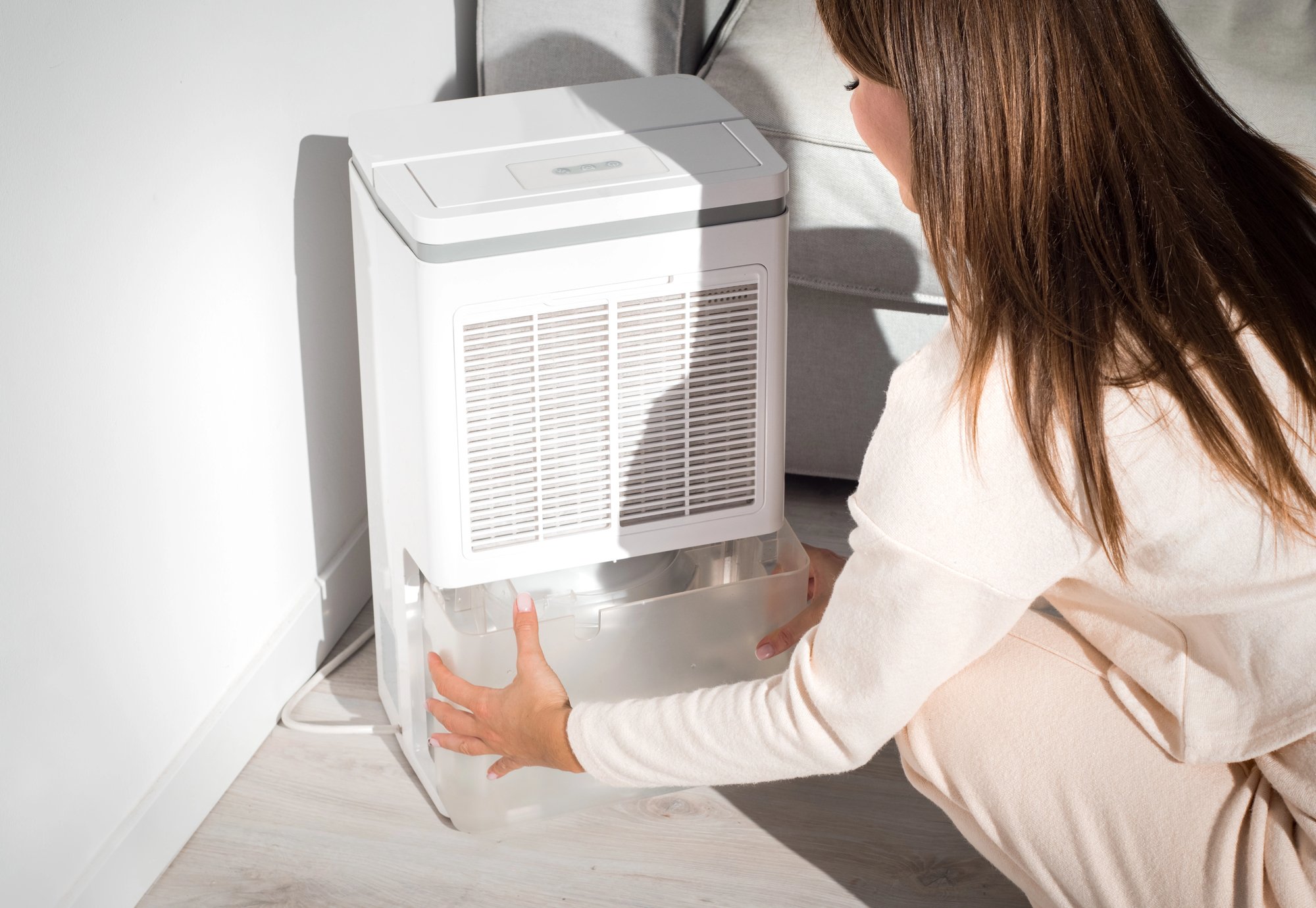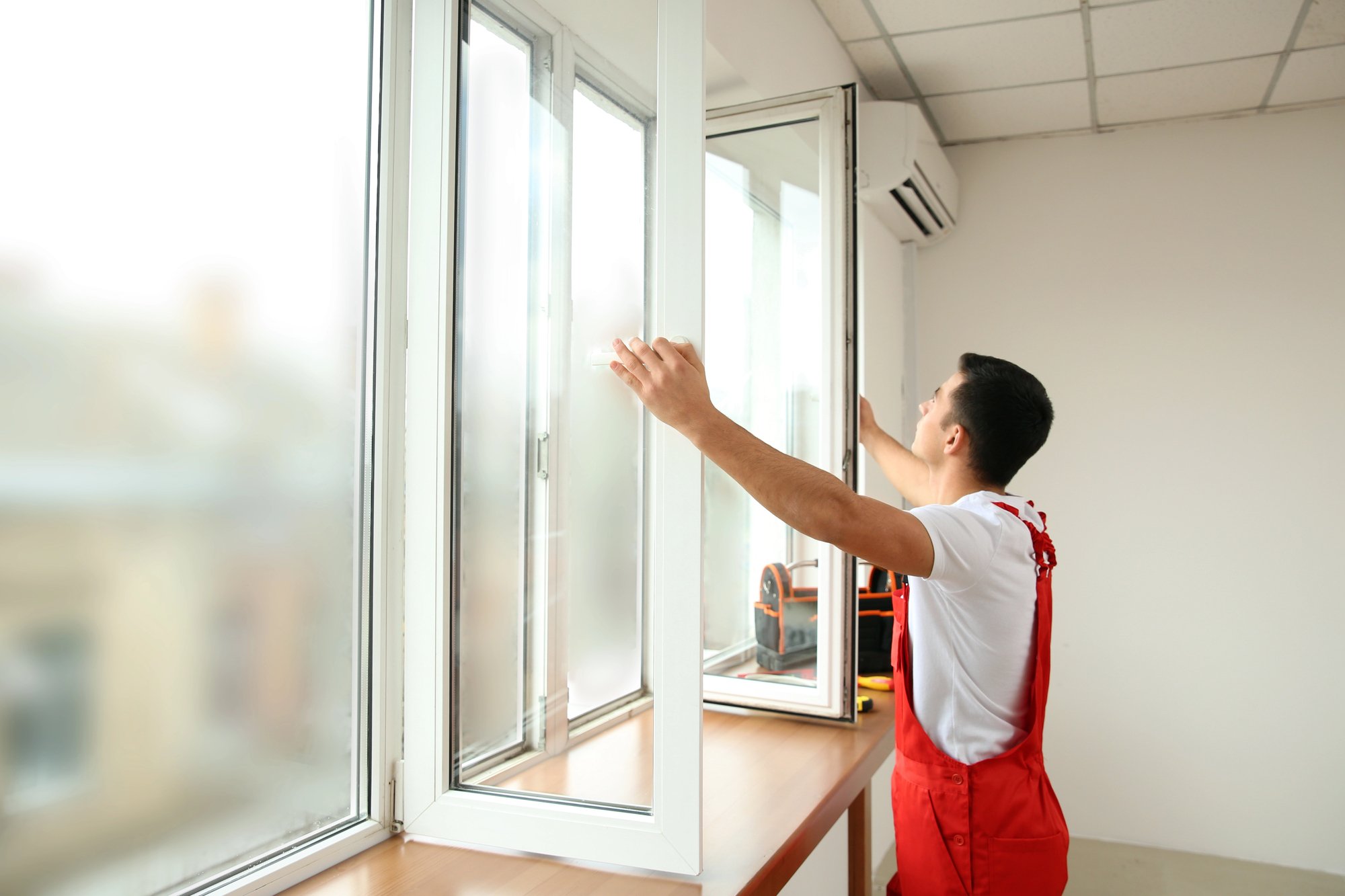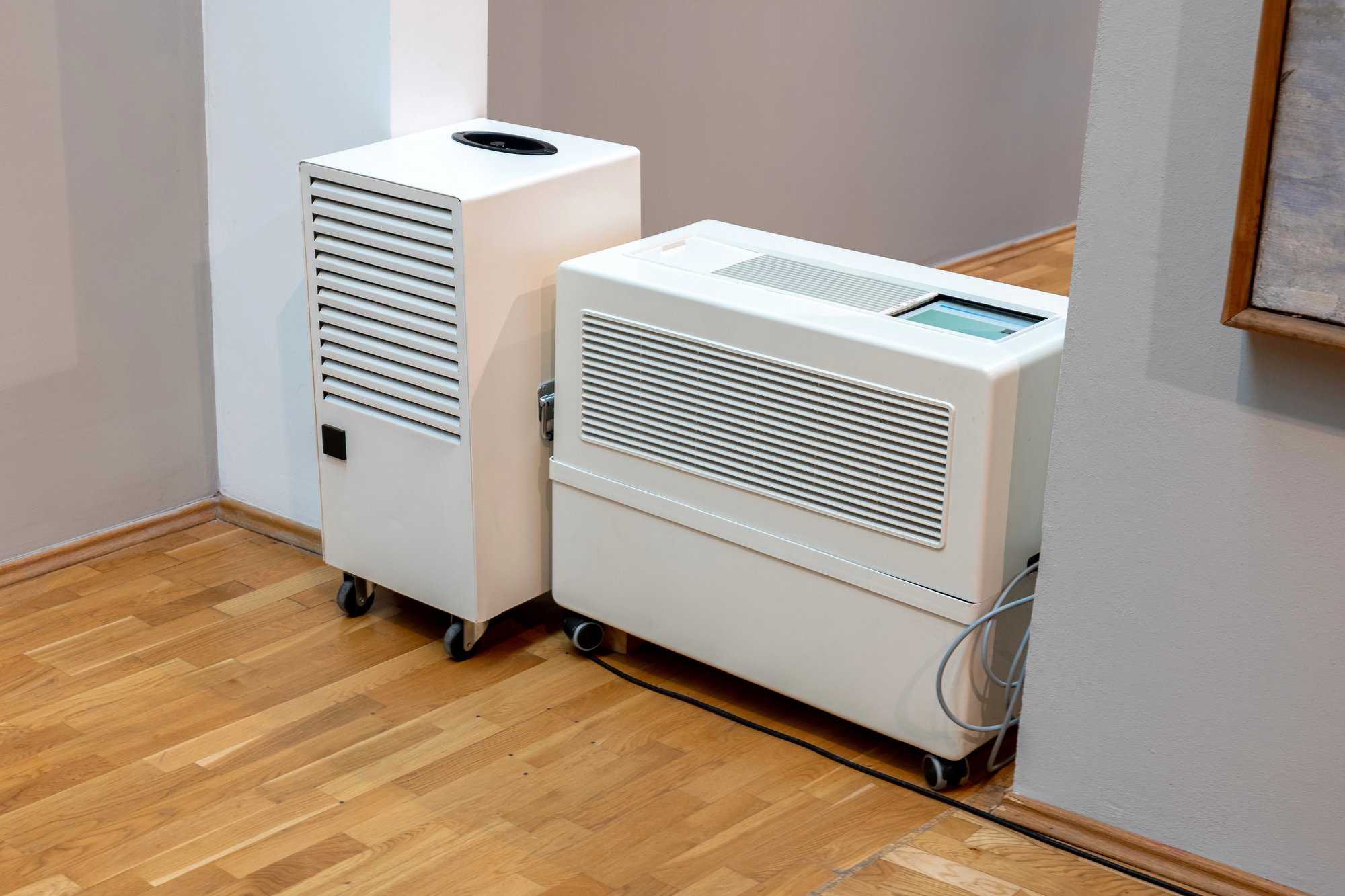When you check the temperature in Portugal on your weather app during the winter, it’s hard not to get jealous. While it may look warmer online, Portugal’s winters feel colder and wetter in reality – even if it’s not raining. We’re here today to talk about the “wetter” part of the previous statement.
During the Portuguese winter, cool temperatures combine with frequent rain and high coastal humidity. Many homes are older and lack insulation, so homes feel colder on the inside and the moisture in the air wets your windows in the morning as the temperatures start to warm up. If left unchecked, the high humidity in the Portuguese air can result in wet patches and the mold that so many new resident in Portugal might notice by their first January. This article explains what is happening, which homes are most at risk, how to protect your health and property, why airing out your home in winter matters even when you are away, and which tools will actually help you protect your home successfully.
Why Portuguese Homes Get Wet in Winter
Climate
Along much of Portugal’s coast, humidity is relatively high in the winter and rainy days are common. High outdoor humidity does not automatically create mold inside, but it means your home begins each day with a higher moisture baseline.
Structure
A large part of the housing in Portugal predates modern insulation standards. Single glazing and uninsulated walls or roofs keep interior surfaces cold. When warm, moist room air touches those cold surfaces, water condenses. You see it on windows at dawn, in external corners, behind chests of drawers pressed against outside walls, and inside enclosed balconies.
Lifestyle
Daily routines add more moisture than most people expect. Cooking without lids, showering without a window or extraction fan, drying clothes indoors, and even breathing in a sealed room all increase the amount of indoor humidity. A typical load of wet laundry can release a couple of litres of water into the air. In a small flat with cool walls, that is enough to push you past the dew point and feed visible mold.
Put those factors together and you have the classic winter pattern in Portugal. Condensation appears on the coldest surfaces, paint blisters or flakes, wood swells, the house smells musty, and black or green speckles appear where air is still and surfaces are cold.

Moisture and Mold – What They Do to Your Health
Public health guidance is clear. Moisture problems and mold are associated with more respiratory symptoms, more asthma and allergy issues, and general irritation of the eyes, nose, and throat. There is no safe amount of persistent visible mold. The goal is to remove existing growth and control moisture so it does not return. That means fixing the cause, not just treating the mold.
How Moisture Gets In: Three Common Problem Types
1) Condensation problems
This is the most common indoor issue in Portugal. Moist room air condenses on cold surfaces such as window panes, exterior corners, and tiled bathrooms. The telltale sign is water beading on windows in the morning and mold in cold corners or behind furniture.
2) Ground moisture intrusion
On ground floors and semi-basements, moisture from the soil can wick up walls if the moisture barrier failed or was never installed. You may see blistering paint near the baseboard level and white salty deposits known in Portuguese as salitre. This needs diagnosis and usually requires a structural fix.
3) Water intrusion from outside
Rainwater enters through cracks in facades, failed sealants around windows, terrace and roof defects, or blocked gutters. Top floors and attic apartments are particularly vulnerable during winter storms. If stains darken after heavy rain or you see drips at ceiling joints, you need to investigate the building’s structure.
Which Apartments Are the Worst for Winter Humidity
Ground floors and semi-basements are often the most moisture-prone because they are closest to the soil and receive less sun. They can be cool even on bright days, and, if ventilation is limited, they hold on to moisture.
Top floors under an uninsulated roof or roof deck can suffer from leaks and condensation on cold roof elements. Gutters clogged with leaves can push water into places it does not belong.
North-facing apartments stay cooler in winter, so walls remain closer to the dew point and condensation forms more easily. Enclosed balconies can trap moisture if they are sealed tightly without proper ventilation.
Interior bathrooms and kitchens with no vented exhaust fan force steam to drift into bedrooms and common areas, which then become mold hot spots.
Your Targets for Indoor Humidity and Temperature
You need to aim for indoor relative humidity between 40 percent and 60 percent, with the lower half of that range preferable during cold snaps. Keep rooms where you spend time at around 18 to 21 degrees °C, roughly 65 to 70 degrees °F in winter. Cold rooms with still air are condensation magnets. A small digital hygrometer will tell you when humidity stays above 60 percent for hours at a time. If you see that pattern, you need to take action.
The Three-Step Plan – Ventilate, Heat, Remove Moisture
1) Ventilate on purpose
Use short, deliberate airing sessions. Open windows fully for five to ten minutes to create a cross-breeze in the morning and again in the evening. A full opening replaces humid indoor air quickly without over-cooling the building. After steam producing activities such as showers and cooking, ventilate or run the exhaust until the mirrors and windows clear.
Mechanical help is worth it. Install vented exhaust fans in kitchens and bathrooms and use them every time you cook or shower. In homes that are very tight, or where opening windows is impractical because of noise or security, consider a continuous ventilation system with heat recovery. It exchanges stale air for fresh while keeping most of the heat inside.
If you will be away in winter, do not seal the apartment for days without a plan. Ask a neighbor to air it briefly every couple of days, or set mechanical ventilation or a dehumidifier with a humidistat to maintain safe levels while you are gone.
Important practical tip. When you run a dehumidifier in a room, keep the windows and interior doors closed so the machine is not constantly trying to dry outside air. Ventilate first, then close up and pull the moisture out.

2) Keep key rooms warm enough
Condensation forms on surfaces that are much colder than the room air. Keeping living areas near 18 to 21 degrees °C, 65 to 70 degrees °F, narrows the temperature gap and helps prevent dew-point conditions. Even modest, steady heat is preferable to bursts of high heat with long cold periods. Upgrades such as double-pane low-E windows, insulated frames, and roof or wall insulation make a major difference by warming the surfaces where condensation typically appears.
3) Actively remove moisture
Dehumidifiers are the workhorse in a Portuguese winter. They are especially useful in bedrooms at night, in laundry rooms on drying days, and in north-facing rooms that never quite warm up. When drying clothes indoors, pick a separate room and keep the door shut while the dehumidifier runs until humidity drops below about 55 percent. Use pot lids and a range hood vented outside while cooking, and keep the bathroom door closed while you shower so steam does not drift into the rest of the home.
Room by Room Tactics
Bedrooms – Keep closets and large furniture a few inches away from external walls so air can circulate. If windows fog each morning, add a short airing immediately after waking and consider an overnight run of a small dehumidifier.
Bathrooms – Install a proper exhaust fan vented outdoors and run it during showers and for ten to fifteen minutes afterward. Squeegee tiles and glass to remove water so it cannot evaporate back into the room.
Kitchens – Use lids on pots, run the range hood on high during cooking, and give the room a short airing after boiling, simmering, or oven baking.
Closets and storage – Do not press textiles against an external wall. Use breathable storage and avoid sealed plastic bins in rooms that are already humid.
Enclosed balconies – Treat these as buffer zones. Make sure they have both adequate sealing against rain and some controlled ventilation. Otherwise, they trap moisture and push it into adjacent rooms.
Cleaning Mold Safely and Effectively
Fix the moisture problem first and then remove the mold. For small patches on non-porous surfaces, use a cleaner formulated for mold or a suitable disinfectant. Avoid mixing chemicals. Bleach can whiten stains but does not penetrate porous materials deeply, so growth may return if moisture remains. Porous materials such as drywall, insulation, or carpet underlay that are colonized often require removal and replacement once the source of moisture is addressed. After cleaning, dry the area thoroughly and keep humidity in the target range to prevent regrowth. If growth is extensive or if anyone at home has severe respiratory conditions, seek professional remediation and a building diagnosis.
Why Opening Windows Matters Even When You Are Away
It feels counterintuitive to open windows in January, but wide open windows are one of the most effective tools you have. A five- to ten-minute cross-breeze dumps humid indoor air and resets the moisture balance without freezing the walls. Leaving a window tilted open for hours cools the nearby surfaces while barely changing the room air, which can make condensation worse. If you will be away for several days, arrange for short periodic airing or rely on mechanical ventilation or a dehumidifier with a humidistat so humidity never builds up. When you return, resume the simple rhythm of ventilate, heat, and dehumidify.

Portugal-Specific Realities and a Practical Mindset
Portugal has a higher share of homes with moisture problems or leaks than many EU countries, largely because of an older stock of housing and a temperate climate that encouraged insulation-light construction. That does not mean moisture problems are inevitable. It means that you need a plan. The physics are simple. Humid air plus cold surfaces plus moisture from daily life equals condensation and mold. Break that triangle with deliberate ventilation, enough heat for key rooms, and active moisture removal. If your apartment is on the ground floor or under a roof deck, add regular checks for foundation moisture and roof leaks to your winter routine.
Tools and Products That Work
This section keeps the list short and practical, then explains how to choose and use each item.
- Hygrometers – These small sensors show relative humidity at a glance. Place one in the most moisture-prone room and one near the bedroom. Aim to live between 40 and 60 percent humidity in winter and take action whenever you spend hours above 60 percent.
- Dehumidifiers for lived-in rooms – Compressor dehumidifiers are the usual choice for rooms kept at 15° C, about 59° F, or above. Size the unit to the space and the moisture load. A small bedroom may do fine with a compact model under 16 liters per day. A large living room often needs 16 to 21 liters per day. A whole small apartment with laundry-drying days may benefit from 20 to 30 liters per day or more. Ventilate briefly, then close windows and doors and run the machine until you reach the mid-50s. Clean filters and consider continuous drainage to a sink if you will run it for long periods.
- Dehumidifiers for cool or unheated spaces – Desiccant models work better in cool rooms, garages, or semi-basements because they do not rely on cold coils. They also release a small amount of warmth into the room, which can be helpful on wet, chilly days.
- Exhaust fans – Kitchens and bathrooms need exhaust fans vented to the outside. Use them during the activity that creates moisture and for ten to fifteen minutes after. Keeping the bathroom door closed during and after showers prevents steam from drifting into bedrooms.
- Moisture absorbers – Passive tubs with calcium chloride crystals are useful in small enclosed spaces such as closets or storage rooms. They are not a substitute for a proper dehumidifier in living spaces, but they can keep a closet fresher through the wettest months.
- HEPA air purifiers – These do not remove moisture. They help reduce airborne mold spores and dust, which can make life more comfortable for allergy sufferers once you have controlled humidity and cleaned visible mold.
- Anti-mold and anti-condensation coatings – Primers and paints with mildewcides or insulating micro-spheres can help on recurring cold spots once you have solved the moisture source. Treat them as finishing measures rather than a cure by themselves.
- Window and insulation upgrades – Long term, better windows and insulation reduce cold surfaces and drafts. Double-pane or triple-pane low-E windows and insulated frames warm the glass, which significantly reduces morning condensation. Roof and wall insulation keep interior surfaces closer to room temperature and ease the burden on every other tool you use.
Daily Habits That Pay Off
Begin the day with a five- to ten-minute cross-draft. Use lids and a vented range hood while cooking, and keep the bathroom door closed during showers with the fan running. Heat steadily rather than in short bursts. Dry clothes outside when possible or in a dedicated room with the dehumidifier on and the door shut. Leave a few inches behind large furniture for airflow. Check balconies and window seals after heavy rain. If you live on the ground floor, keep an eye out for tide marks and salts near the baseboards. If you live on the top floor, check gutters and the roof area after autumn storms.

Final Thoughts
Winter humidity in Portugal is manageable with the right habits and a few well-chosen tools. Understand the simple equation that drives the problem and then break it. Ventilate deliberately, keep key rooms warm enough to avoid cold surfaces, and remove moisture where it accumulates. Be extra vigilant if your apartment is on the ground floor or under the roof deck, and address structural issues promptly. Whether you are home or away, a little intentional airing out of your property or accommodation goes a long way! We hope this will help you during your first and future winters in Portugal.


